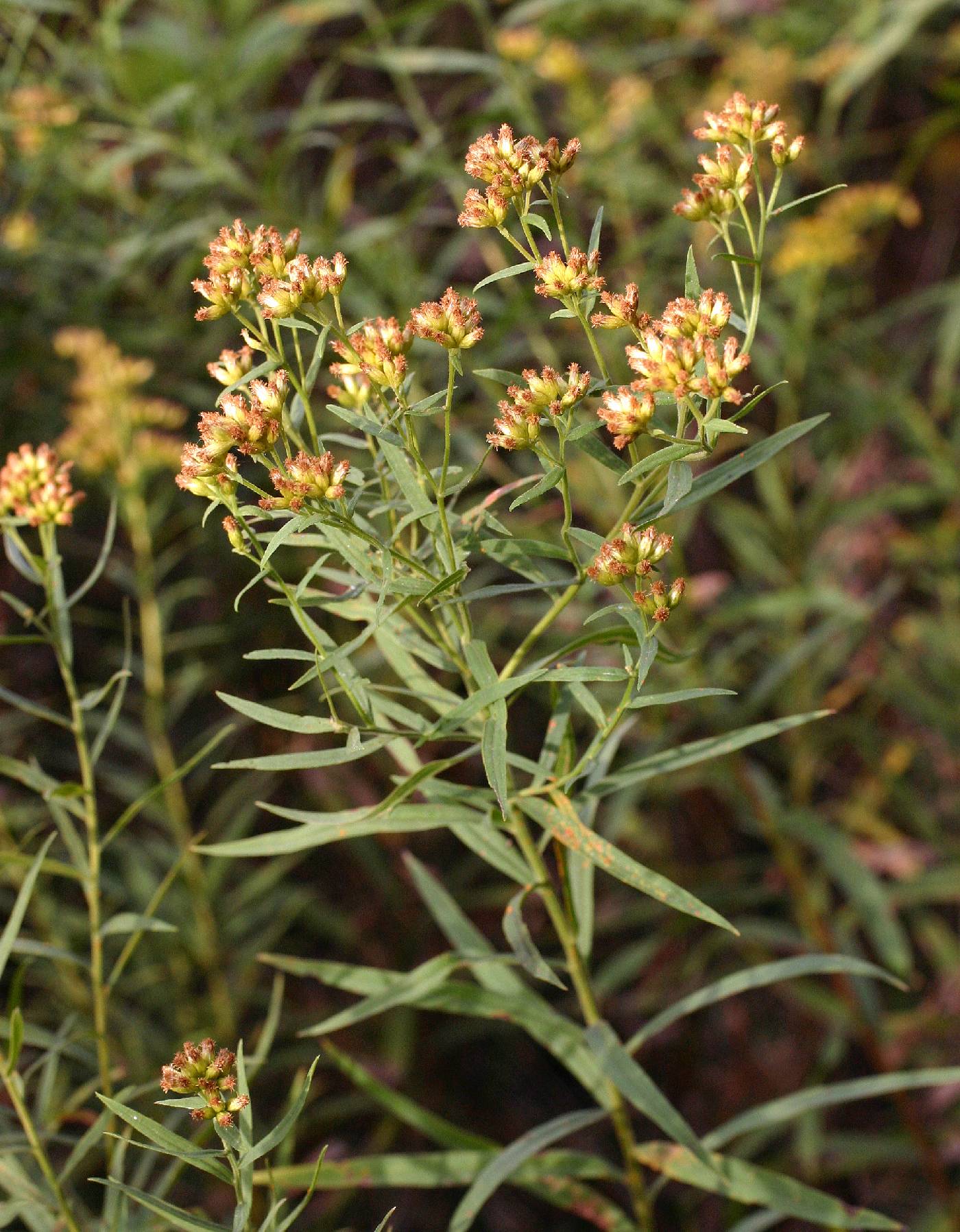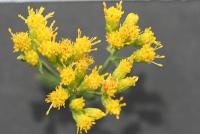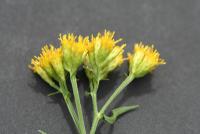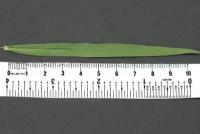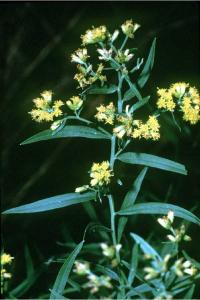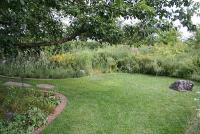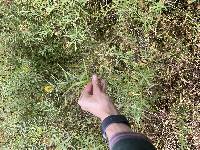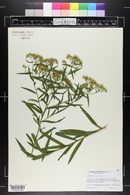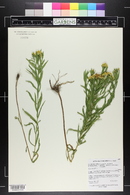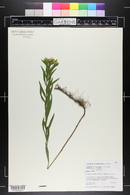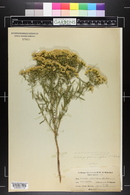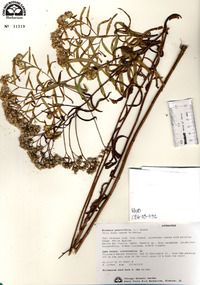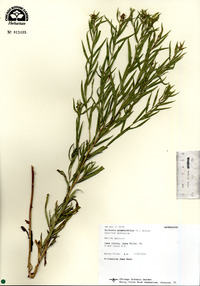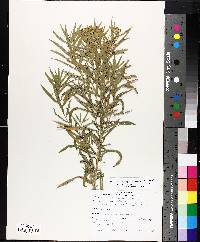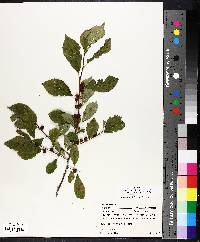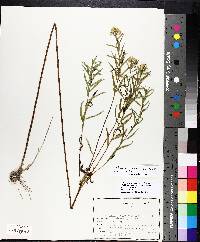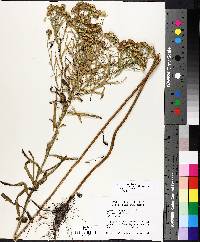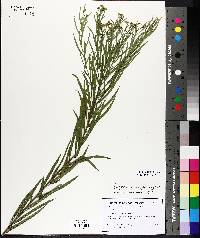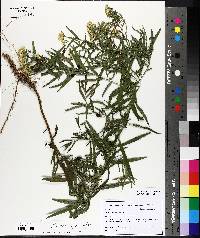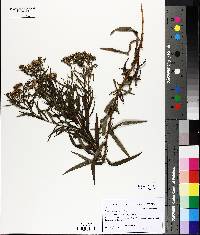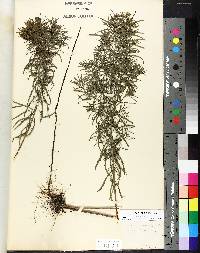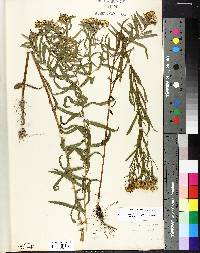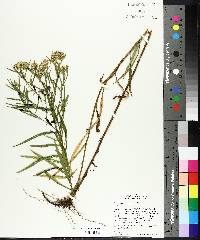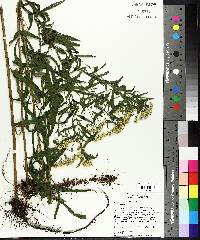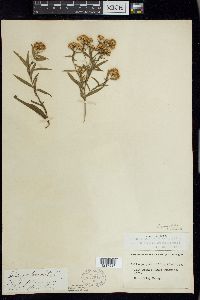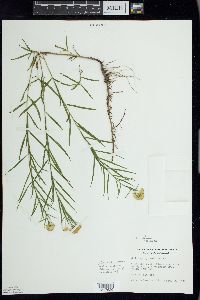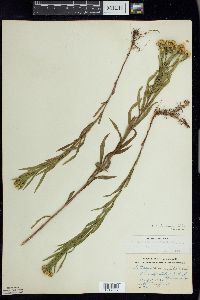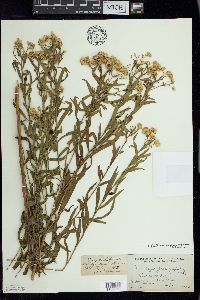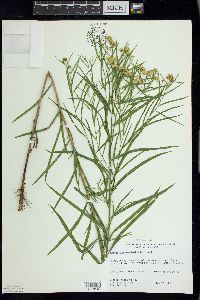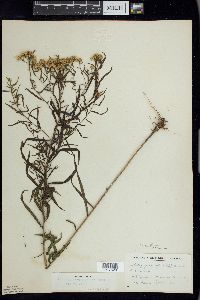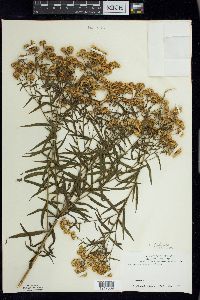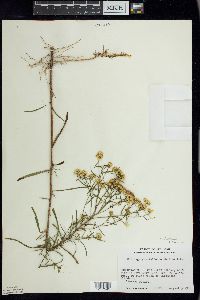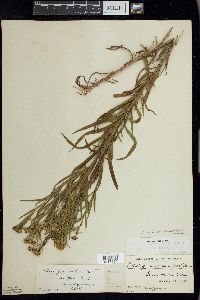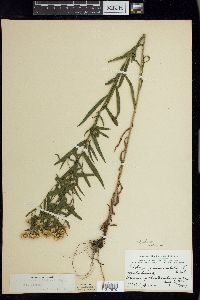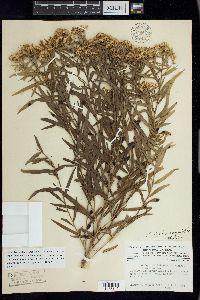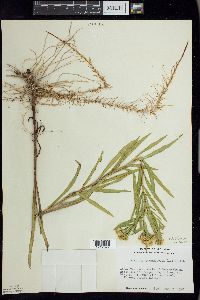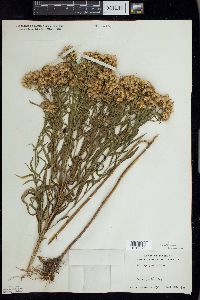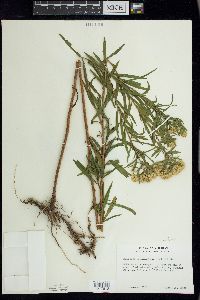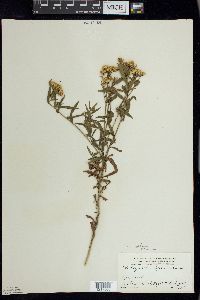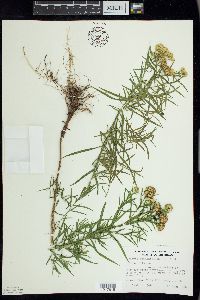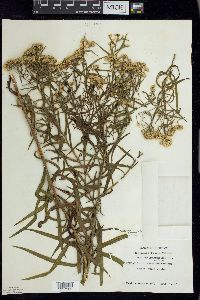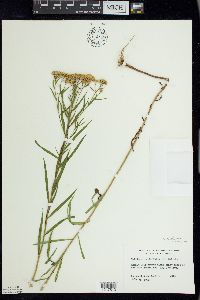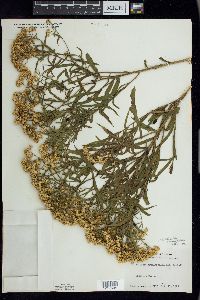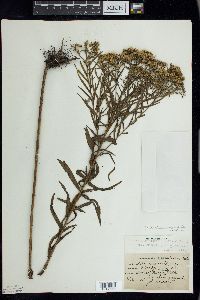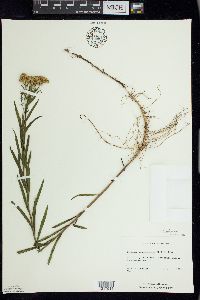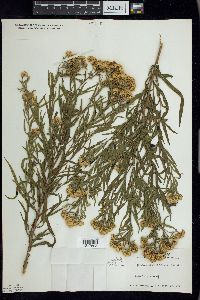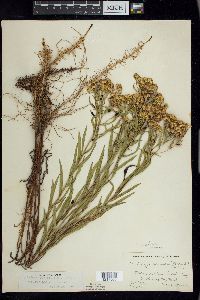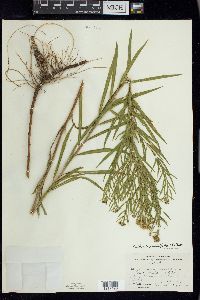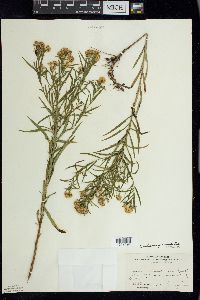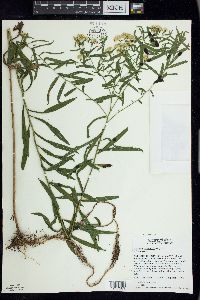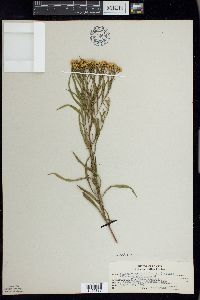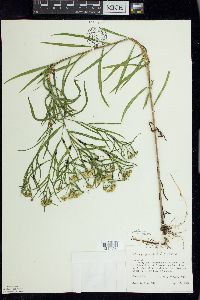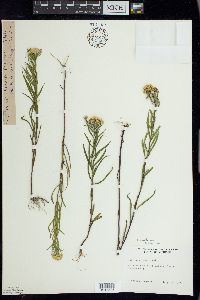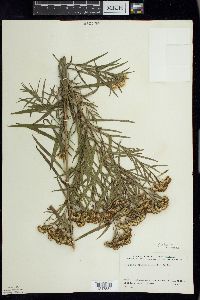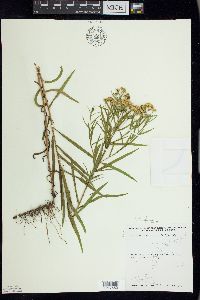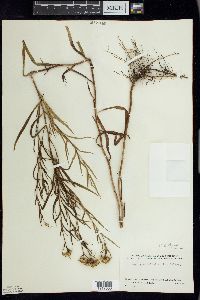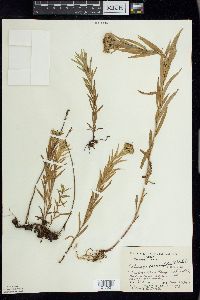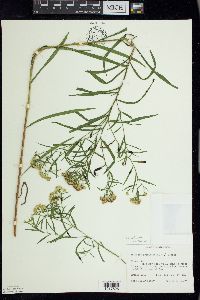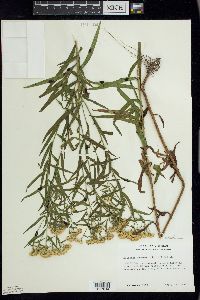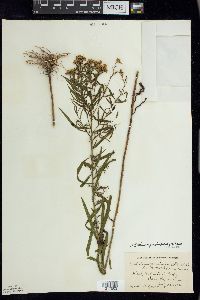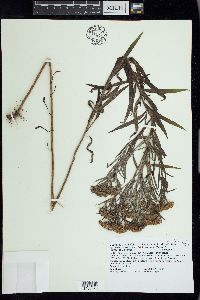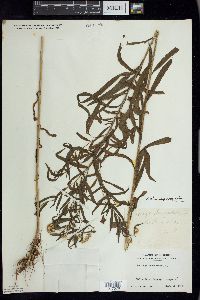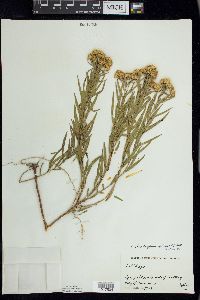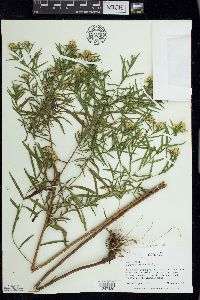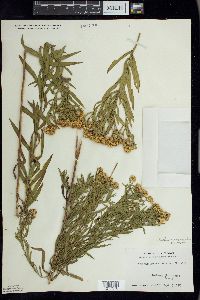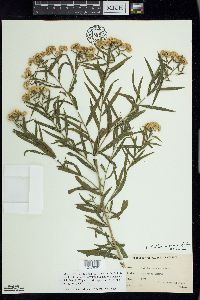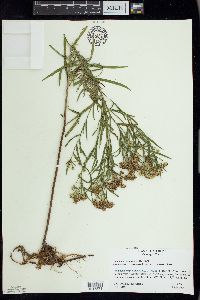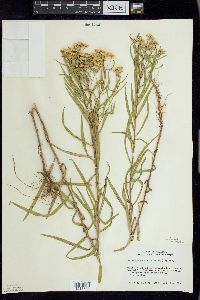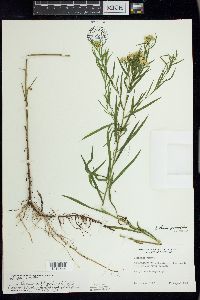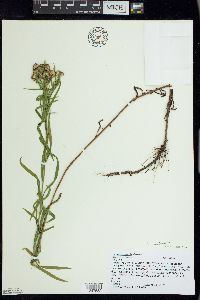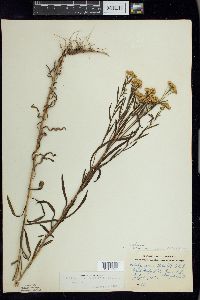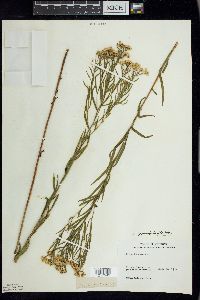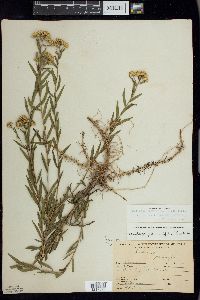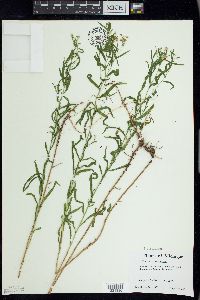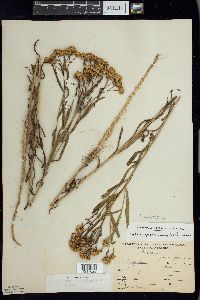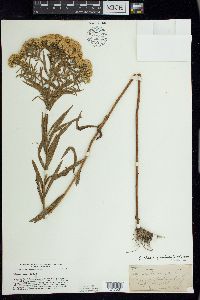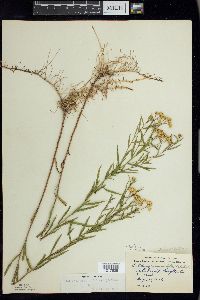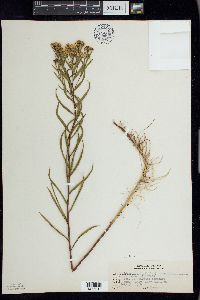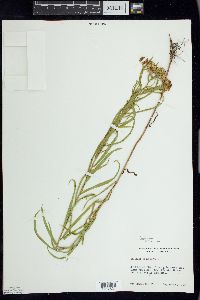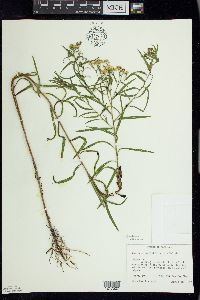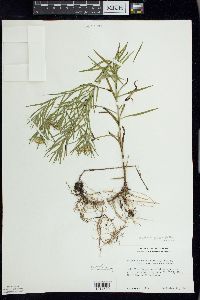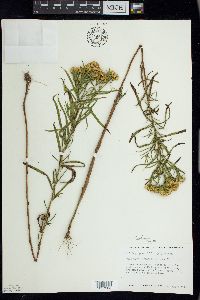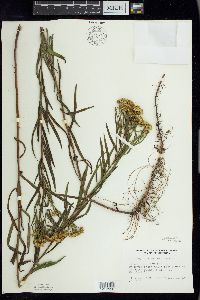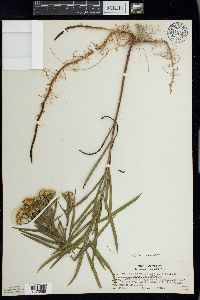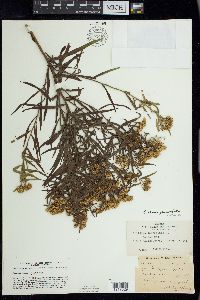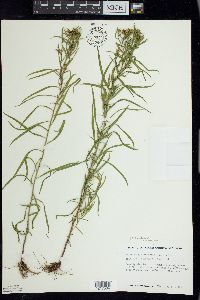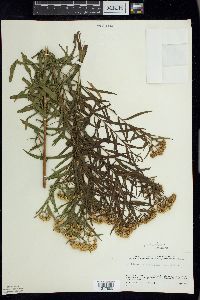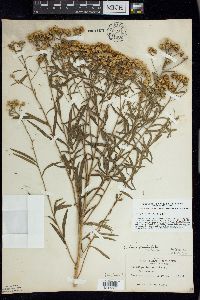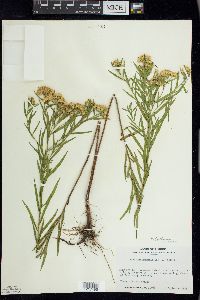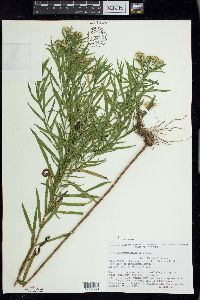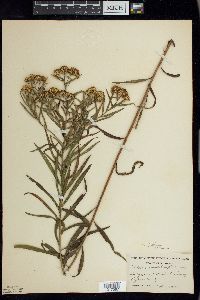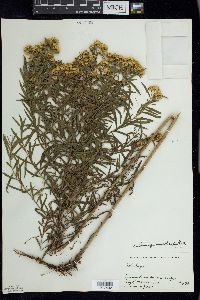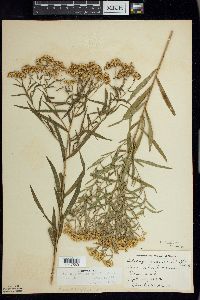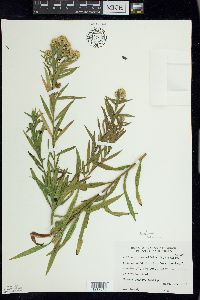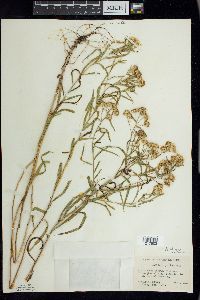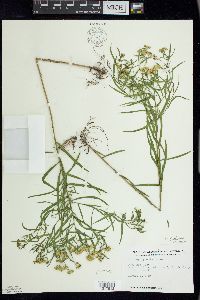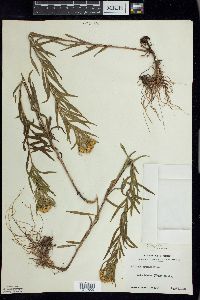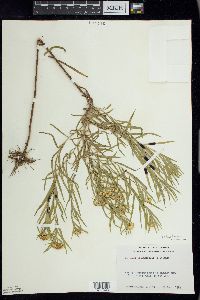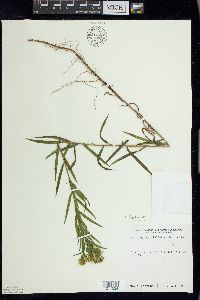Euthamia graminifolia
|
Euthamia graminifolia (L.) Nutt.
 (redirected from: Solidago graminifolia var. polycephala (Fernald) Fernald) (redirected from: Solidago graminifolia var. polycephala (Fernald) Fernald) |
|
|
Family: Asteraceae
Flat-Top Goldentop, more...flat-top goldentop, common goldentop, flat-top goldentop
[Euthamia fastigiata Bush, moreEuthamia graminifolia subsp. nuttallii W. Stone, Euthamia graminifolia var. graminifolia (L.) Nutt., Euthamia graminifolia var. hirtipes (Fernald) C.E.S. Taylor & R.J. Taylor, Euthamia graminifolia var. major (Michx.) Moldenke, Euthamia graminifolia var. nuttallii (Greene) W. Stone, Euthamia graminifolia var. polycephala , Solidago graminifolia (L.) Salisb., Solidago graminifolia graminifolia , Solidago graminifolia var. graminifolia , Solidago graminifolia var. major (Michx.) Fernald, Solidago graminifolia var. nuttallii (Greene) Fernald, Solidago graminifolia var. polycephala (Fernald) Fernald, Solidago graminifolia var. septentrionalis , Solidago graminifolia var. tricostata (Lunell) S. K. Harris, Solidago lanceolata] |
Perennials, 30-150 cm. Stems (commonly branched in distal 1 / 4 ) glabrous or densely spreading-hirtellous, not glaucous. Leaves spreading to ascending; blades 3- or 5-nerved, linear to lanceolate, 37-130 × (2.1-)3-12 mm, lengths 7-20 times widths, abruptly to gradually reduced distally, herbaceous to firm-herbaceous, margins scabro-ciliate, apices obtuse to acuminate, faces usually little and obscurely gland-dotted (26-47 dots per mm²), barely viscid (more so on exposed shores), glabrous or densely spreading-hirtellous. Heads glomerulate, usually in flat-topped arrays (1.5-28 cm diam.), 10-28% of plant heights (branches unequal, giving irregular, broken appearance). Involucres broadly campanulate to campanulate, 3-5.3 mm. Phyllaries often ± yellow basally, outer (at least) usually green-tipped, outer ovate, inner oblong, apices obtuse or broadly acute. Ray florets (7-)17-22(-35). Disc florets (3-)5-7(-13); corollas 2.6-3.4 mm. 2n = 18. Flowering Jul-Oct. Open fields, lake shores, and vacant lots; 0-900 m; St. Pierre and Miquelon; Alta., B.C., Man., Nfld. and Labr. (Nfld.), N.W.T., N.S., Ont., P.E.I, Que., Sask.; Ala., Colo., Conn., Del., Ill., Ind., Iowa, Ky., Maine, Md., Mass., Mich., Minn., Miss., Mo., Mont., N.H., N.J., N.Y., N.C., Ohio, Okla., Oreg., Pa., R.I., S.C., S.Dak., Tenn., Vt., Va., Wash., Wis., W.Va., Wyo.; introduced in Europe, Asia. Plants with densely hairy leaves and stems have been called var. nuttallii. Though extremes are distinct, the plants cannot be reliably separated rangewide from typical Euthamia graminifolia. Plants called var. major have been distinguished primarily on the basis of leaf dimensions (lengths 8-11 times widths in var. major versus 11-20 in typical E. graminifolia). Overlap is extensive; no discrete boundaries can be drawn. Euthamia hirtipes was described as a putative hybrid involving a hairy E. graminifolia and a small-headed E. caroliniana (M. L. Fernald 1946d). It combines broad, hairy leaf blades with few-flowered heads, a condition that is not intermediate between the putative parents. D. J. Sieren and J. F. Merrit (1980) and C. E. Taylor (1975) reviewed the plants. Until evidence can be supplied to the contrary, E. hirtipes should be considered a synonym of E. graminifolia.
Glabrous to densely spreading-hirtellous, 3-15 dm; lvs 4-13 cm נ3-12 mm, evidently 3-nerved, the larger ones ordinarily with 1 or 2 additional pairs of fainter lateral nerves; heads mostly sessile or subsessile in small glomerules, mostly 20-35(-45)-fld, with 15-25(-35) rays and (4)5-10(-13) disk-fls; invol turbinate, 3-5 mm; rays minute and often
scarcely spreading, ca 1 mm; 2n=18. Open, usually moist ground; Nf. and Que. to B.C., s. to N.C., Mo., and N.M. (Solidago g.) The common form in our range is var. graminifolia, with relatively narrow lvs, the middle cauline ones 11-20 times as long as wide, acuminate. Typical var. graminifolia is essentially glabrous. Similar plants with evidently spreading-hirtellous herbage have been called var. nuttallii (Greene) W. Stone, but do not form an ecogeographically distinctive population. The var. major (Michx.) Moldenke is northern, entering our range only in n. Minn.; it has broader lvs, the middle cauline ones mostly 7-11 times as long as wide, merely acute, and is often smaller, with less ample infl. Gleason, Henry A. & Cronquist, Arthur J. 1991. Manual of vascular plants of northeastern United States and adjacent Canada. lxxv + 910 pp. ©The New York Botanical Garden. All rights reserved. Used by permission. From Flora of Indiana (1940) by Charles C. Deam Infrequent to frequent in every county of the state. It prefers a moist rich soil but adapts itself to almost all kinds of soils and habitats. It is usually found in large colonies where its spread is not limited. Frequent along roadsides and railroads, in open places in alluvial soil along streams, in open woodland, and in fallow fields. ...... Indiana Coefficient of Conservatism: C = 3 Wetland Indicator Status: FACW |
